Sewage treatment plants generally employ waste digesters, giant tanks with floating lids, which keep methane from leaving the structures as pressure builds inside.
The demolition contract awarded to Triple M Demolition Inc. of Campbellville, Ont. — remove the 375,000 lb, concrete and steel lid of a decommissioned digester tank at the City of Toronto’s Highland Creek Wastewater Treatment Plant, without damaging the concrete tank itself.
The plant is located in the old City of Scarborough at the mouth of Highland Creek. The digester tank had been put out of service about a dozen years previous, but plant operators saw the possibilities of repurposing the concrete tank as a sludge storage facility.
“The way these digester tanks work is by raising the lid as methane builds inside the digester,” says Rob Morrison, site supervisor with Triple M. “As methane is piped out and used as incinerator fuel, the lid is lowered again.”
Calling it a lid minimizes the scope of the structure. It measures 85-feet in diameter and consists of a series of steel trusses radiating from a central steel hub. Quarter-inch thick plate steel forms the hull and a massive concrete ballast rings the circumference of the structure. A water seal prevents gas from escaping around the structure’s edges.
“In full operation, the lid is supported purely by the pressure of the methane gas building up underneath,” says Morrison. “However, in this case, all that was inside the tank was about 10 feet of water that had accumulated over the years as rain and snow melt.”
Triple M was awarded the contract based largely on its methodology for removing the lid. The structure had descended to its lowest position, supported by 16 corbels about 20 inches long that protruded from the tank wall. The ballast ring sat on the corbels with about six inches of overlap around the ring’s diameter.
The operation began by removing all plate steel of the structure, exposing the trusses and concrete ballast underneath.
“We used Harris propane torches to selectively remove the trusses about three or four at a time,” says Morrison. “The workers left small tabs on the trusses and we used a small grapple, designed for material handling, to grip the trusses and remove them from the tank. We didn’t want to remove too many at one time and unbalance the structure, so we worked slowly and carefully. Eventually we were left with only a small pie section of trusses which we also removed.”
The concrete ballast ring remained, supported by the corbels. The ring had originally been cast in16 segments.
“There was a potential for the concrete ring to lift from the corbels,” says Morrison. “To prevent that, we used tubular steel that we ran through the ballast and then welded caps on the ends. We then ran 5/8-inch chains through eight roller-box openings around the ring structure, like threading a needle, to prevent any pieces from falling in and damaging the tank.”
Each 18-foot segment of concrete ballast weighed in at more than 20,000 lbs., with the final 12-foot segment providing a little relief at a mere 13,000 lbs. and change. The segments were removed using a Liebherr 934 Litronic lifter. “Its cab rises 15 feet into the air to improve visibility,” says Morrison. “Since it’s rated to lift 24,000 lb. loads, we were able to operate it well within load range.”
From lid removal to ballast disassembly, the job took about 16 working days straddling September and October.
“In this line of work, nothing can really be considered unusual,” says Morrison. “But this job provided a fascinating structural challenge.”
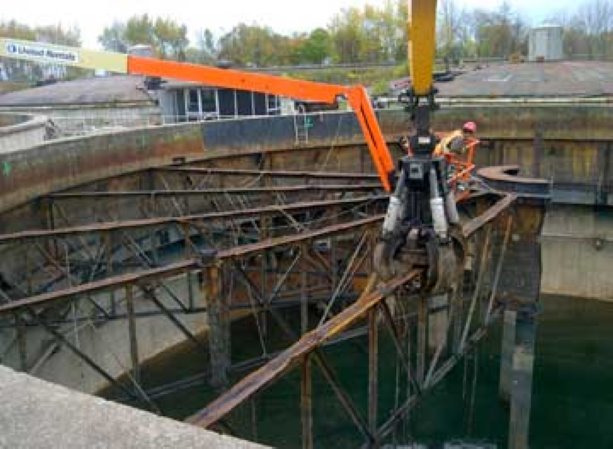
1/4
Triple M Demolition Inc. removed 375,000 lb concrete and steel lid of decommissioned Toronto digester tank
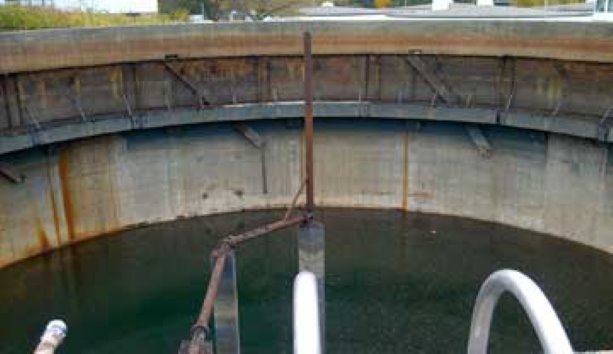
2/4
Triple M Demolition Inc. removed 375,000 lb concrete and steel lid of decommissioned Toronto digester tank
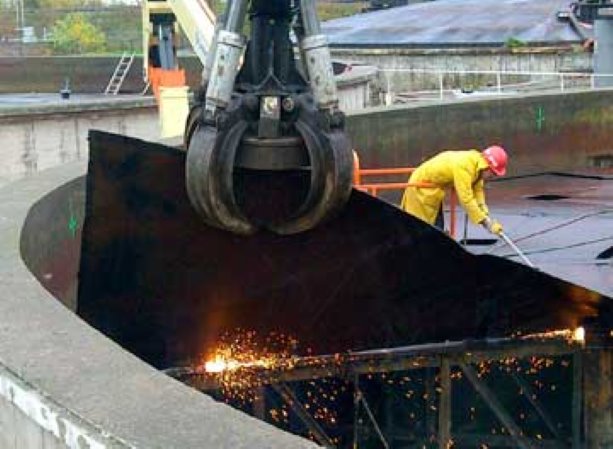
3/4
Triple M Demolition Inc. removed 375,000 lb concrete and steel lid of decommissioned Toronto digester tank
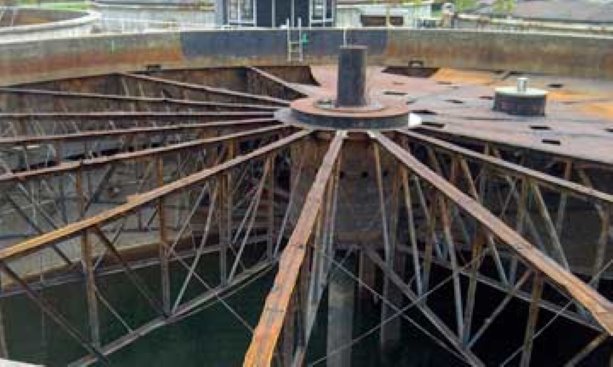
4/4
Triple M Demolition Inc. removed 375,000 lb concrete and steel lid of decommissioned Toronto digester tank


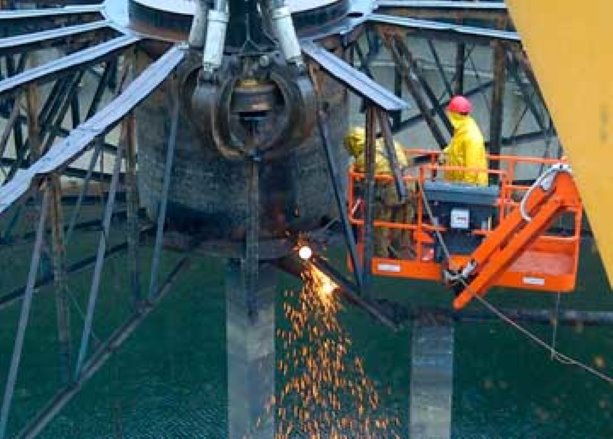
Recent Comments
comments for this post are closed